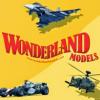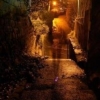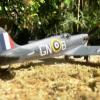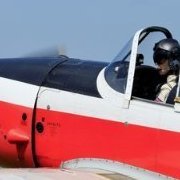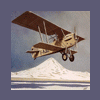Search the Community
Showing results for tags 'avro'.
-
At Telford SMW 2015 Blackbird Models is to release 1/72nd Avro Lancaster VI & Avro Lancastrian resin conversion sets. Source: https://www.facebook.com/173300159429640/photos/a.173306382762351.40890.173300159429640/935472259879089/?type=3&theater Source: https://www.facebook.com/173300159429640/photos/a.173306382762351.40890.173300159429640/935472126545769/?type=3&theater V.P.
-
Decals: Wolfpack 1/72 WD72001 Avro 698 Vulcan Part.1 - incl. two XH558 markings! Source: https://www.facebook.com/media/set/?set=a.907570666002806.1073741852.554818677944675&type=3 V.P.
-
Good news for those waiting for the greatly anticipated release of Airfix's 1/72 Avro Shackleton MR.2! Airfix have decided to release the model earlier than planned and it should now be available from Mid-October, rather than December 2015 and is open to pre-order now from Wonderland Models! For more info check out our newsletter here.
- 8 replies
-
- 3
-

-
- avro
- shackleton
-
(and 7 more)
Tagged with:
-
Hi folks, another little one. White automotive paint, Alclad on intakes, ModelMaster Exhaust for exhausts and Brasil decals. Must have been very very fun to fly to destinations such as Castlegar in British Columbia with these!
- 10 replies
-
- 15
-

-
Afternoon all, I was just checking twitter (I am not at any of the Vulcan's displays today) and it appears the Vulcan has returned to base at Doncaster with a possible fuel leak. I do hope they get it fixed so she can be ready for the planned "final tour" that the VTTS are thinking about. Thoughts? Sam
-
Amodel is to release a 1/144th Avro Lincoln kit - ref.14413 Source: http://www.hannants.co.uk/product/AMU14413 V.P.
-
Kit manufacture: Cyber Hobby Scale: 1/200 Type: Avro Vulcan B.2 Extras used: None, completely OOB Paints and colours used: Tamiya Acrylics, XF-1 Black (pre shading only), XF-2 Flat White, XF-81 Dark Green, XF-83 Medium Sea Grey, XF-85 Rubber Black (all black work), X-18 Semi Gloss Black (Landing gear struts), XF-57 Buff (pre and post shading white), X-2 Gloss White (Blue Steel), Vallejo RLM green on tail (can't remember exactly which one), Mr Metal Color Dark Iron (fan blades, jet exhaust), Flory Grime wash (over white) and Flory Dark Dirt, Alclad Aqua Gloss (decal prep) and Hannants Satin Varnish (finish). Other info: Full build is here : http://www.britmodeller.com/forums/index.php?/topic/234969240-cyber-hobby-1200-avro-vulcan-b2/page-1 Background waffle... My grandad was a Lancaster (and other) pilot during the war serving with bomber command. He also flew with Air and Sea Rescue and was very proud of the work he did during the Berlin airlift. After this he left the RAF to own a farm, thus ending our families ties with the RAF. However, my Dad always loved aircraft and transferred that enthusiasm to me. When I was a kid, we would regularly take family trips to Duxford for the airshows. During the mid-late 80s (I think) when I would have been 5-7 years old, we arrived late to the show due to a traffic jam and the car overheating. By the time the we parked in the overflow car park, the Vulcan was already tearing through the skies, her engines shaking the ground, setting off car alarms. I was terrified! Apparently I jumped back in the car for cover! She was the star of the show. Knowing time is running out to see the Vulcan fly, Dad and I went to Waddington airshow last year to see her. She was undoubtedly still the star. The engine howl on spool up and nibble leap into the air was exactly how I remember. She would look less out of place in a Star Trek movie than the skies of Britain! I LOVE this aircraft! The Kit Right, enough of that. I chose the Cyber Hobby kit for two reasons: 1. It was £9.99 in the sale at Hannants and 2. I'm waiting for Airfix or someone else to retool a 1/72 modern version, packed with detail! Build was straight forward on the whole; a bit of filler here and there and I packed out the panel to take the Blue Steel as this was a poor fit. Other than that, the fit was excellent. The detail is great in this kit! It even has a cockpit with seats and pilots, not that you'll be able to see them after it's finished. Decals are great too. I masked originally by blowing up the instructions to the size of the model and using a craft knife to cut through the instructions and tamiya tape. It didn't work great and the camo edges were very rough. I remasked most of it using Jammy Dog tape which is how I'd do it all next time. And there we have it! A great kit, go and get one! Val
- 20 replies
-
- 22
-

-
- 1/200
- Cyber Hobby
-
(and 4 more)
Tagged with:
-
Well, since my Harrier is off the bench, I'm going to start another "quick" (LOL) build. It is to be the magnificent Vulcan B.2, as inspired by Rob our resident Vulcan nut Sprues: She's going to be finished in Green/Grey camo, with white underside, and a massive Blue Steel nuclear missile! I'll probably get on to starting her at the weekend, if not before Val
- 96 replies
-
- 7
-

-
- cyber hobby
- avro
-
(and 3 more)
Tagged with:
-
Three panoramas of the outside, and eight of the inside, from bomb aimer to rear gunner, should provide a lot of detail to anyone building a Lancaster! There are only three Lancasters in the world that are not stationary in a museum: The BBMF Mk.III PA474, the Canadian Mk.X FM213, and NX611 "Just Jane". This virtual tour has been created for the Lincolnshire Aviation Heritage Centre in East Kirkby. Almost all details are labelled, many explained, just move the mouse cursor over an item of interest. Click here open the panorama, and switch to full screen mode! If you are interested in future aircraft panoramas, please sign up to our mailing list! A bit more about the virtual tour can be found here. Next to come are a Tiger Moth. If you can think of an aircraft that could benefit from such work, please let us know!
-
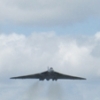
Avro Vulcan Rear Crew Belts and Straps-Photo Request
cathasatail posted a topic in Aircraft Cold War
Good evening all, Could I enquire as to whether anyone would have any photos of the Vulcan rear crew seats with all of the cushions/padding added and any belts and straps that were present on such seats? I've seen numerous photos of the rear crew seats (been lucky enough to have the experience of sitting in one at the Midland Air Museum) and in almost all of those photos, no buckles and straps are present (presumably because they are museum aircraft). What kind of straps were present in operational aircraft? A bit of context-Having abandoned my early attempt failure at creating a 1:35 plasticard vulcan cockpit and getting all of the proportions and structure completely wrong, I embark (with more skill, dare I say) but on a different scale and a different material-card. I'm attempting to make a 1:48 card vulcan, I would post the build process on this website but the photo uploading process is so much easier on the blog compared to here (i'm sorry to say). If anyone fancies having a peek-http://cardvulcan.blogspot.co.uk/ Regards, Sam -
Hi, everybody. After several months of lurking around here and finding myself in awe of the quality of the builds on here, I finally decided I'd sign up and post my own efforts. I picked up Tamiya's 1:48 Lancaster on eBay, the other day. I've always had a thing for Lancasters, and the kit was relatively cheap. I couldn't resist. I'm afraid though, it seems I've bitten off a bit more than I can chew - I wouldn't consider myself to be the most accomplished modeller, and the equipment I've got to work with is...well, rudimentary at best. I really want to do this kit justice, so I'd love some constructive criticism, advice, tips, tricks or anything else you might be willing to share Anyway, here's the early going (apologies for the iPhone camera quality) Got some of that Eduard PE too, to spruce up the interior a bit. Heard a lot about it, but never used it before. Utterly fantastic, and quite cheap too. Reckon I'll get some more for the bomb bay - although the kit bay comes with lots of studs on it that need to be removed. Anyone have any tricks for removing them, or am I in for a lot of sanding?
-
Avro Lancaster B.II 1:72 Airfix The Lancaster is without doubt one of the most famous aircraft ever to fly and became the back bone of Bomber Command alongside the Halifax in the latter half of WWII. Development was born out of failure in the guise of the Avro Manchester to which history has been unkind because of the unreliable Vulture engines. Convinced that the basic Manchester airframe with an unobstructed full width bomb bay was basically sound, Roy Chadwick and his team designed the Type 683 Manchester III which used a larger wing supporting 4 Merlins. From the start, the aircraft proved Chadwick right, requiring only minor modifications for operational service. The cleverly designed bomb bay meant that the Lanc could carry a 14000lb conventional bomb load but with some modifications could even lift a 22000lb bomb which was unheard of at the time. With over 7000 Lancasters serving in WWII, most were indeed powered by the legendary Merlin. With a risk of Merlin shortages, a design was tested using the Bristol Hercules radial engine which led to one of the most visibly unique variants to operate, the B.II. Whilst the Hercules was more powerful, it had a slightly inferior service ceiling meaning that they generally flew lower than the Merlin variants during raids putting them at greater risk. This contributed to a 60% operational loss although they had a slightly faster cruising speed and rate of climb. All together, 300 B.II’s were produced, operating mainly with the RCAF which used it to replace Wellington bombers. B.II’s were eventually replaced by Merlin variants although a few went on to become test beds. The kit If you’ve wanted to build a B.II in the past, your only option was a conversion set. Paragon designs was a popular choice for several years with superb engine replacements and more recently CMR produced a very fine resin conversion kit including full wing replacements which I was lucky to treat myself to last year. This kit from Airfix is the first full B.II kit available and a very good sign of the direction that Airfix with its new releases. Unless you’ve been abducted by aliens and returned for the summer, you’re no doubt aware that this is the second variant from the same basic tooling as the recently released Dambuster reviewed HERE by Paul So first impressions.... The kit comes packaged in a very sturdy bright red top opening box with stunning digital artwork across the front. Inside, there are 5 light grey sprues bagged together and a separately bagged clear sprue. One is immediately struck by the crisp moulding and wealth of detail, very much in line with recent Airfix offerings and a far cry from their earlier kits which were quite bland and had what looked like prescription canopies! The A4 instruction booklet has superb assembly diagrams and no less than 110 steps so there’ll be no knocking this together in a weekend! This is accompanied by an colour A3 panting and decaling guide which was a pleasant surprise. Shape wise, having seen several of the Merlin variants built up, it looks very good. Throughout the review, I’ll make comparative reference to the Hasegawa and Revell kits. This isn’t to form criticism, but to make comparisons for those who have built either to relate to. Assembly starts with the interior, and plenty there is. Using the bomb bay floor, the cockpit is built onto it in the normal ‘Lancaster’ way. The interior walls are beautifully detailed. The only gripe I have is the instrument panel lacking instrument detail and instead relying on a decal. I think I’ll choose to get an Eduard replacement. There is also room for some scratch building in the cockpit if you choose, for example the prominent but missing trim wheel located to the right hand side of the pilots seat. Something else to consider when assembling the interior is that the spars that sit across the bomb bay reach out and support the wheel well assembly within the wings. If you choose to build as per instructions, you will be required to fit the wings around the bay assemblies rather than fitting them at the end as you can with the Hasegawa and Revell kits. Another option here is to cut off the ends of the spars that become the main gear bay bulkheads but leave enough of the spar protruding out of each side of the fuselage to support the wing. This will allow the wings to be fitted at the end of the build, a tip which I take no credit for but will be doing myself. With the interior fitted and side windows / formation lights fitted, the fuselage can be closed up. Detail on the exterior parts of the kit is very nicely done. Panel lines are recessed and a touch heavier in appearance than the Hasegawa kit for example, but certainly not excessive. I believe that the side windows along the fuselage are a little too deep, photographs of the real thing show these to be very narrow. Surface texture has a slight matt finish which will be good in helping the paint to bond. Attention next turns to the wings. The instructions show the ribs to be fitted between the two spars, however if you’ve cut them off, it might be better to assemble everything into the top wing to ensure you get everything located correctly. Detail in the gear bays is quite stunning, it almost seems a shame to paint them black as you won’t see it! Unique to the new Airfix kits is the ability to have lowered flaps straight from the box. Again the detail is well thought out meaning that it would be rude not to show off the flap detail by having them closed. A slight downside however is a notable sink mark on one wing top surface resulting from the flap moulding on the other side. Fortunately, whilst quite large, it’s on an area of the wing which is easy to fill and sand. It’s strange how only one wing has been affected by this. The wings can be joined up once the gear bays have been assembled. A quick inspection indicates that the dihedral on the outer wings looks to be quite accurate. Next comes the tailplanes and engine nacelles. I’ve read on Britmodeller (Thanks to Stuart Wilson) that there is a mistake on the part numbers for the tail planes. The instructions tell you to join parts A6+A7, but both have locating pins. The correct fitment is A6+b8, A7+B9 so be aware. Separate elevators allow you to choose the position. Each tailpane comes with well engineered tabs to ensure that they don’t sag after fitment. Engine nacelles are quite straight forwards. An unusual design unique to the airfx kits is the requirement to drop the undercarriage through the top of the wing according to the instructions before fitting the nacelle wing root fairing into place. I’m not sure if this is necessary or whether the gear can be fitted from below as per normal, perhaps someone who has already built one can comment? The gear legs are of a sturdy and detailed design although quite fiddly to assemble the drag links which look similar to the Revell kit in design. The gear bay doors have their control links moulded to the doors which is another unusual feature and I suspect at least one will get consumed by the carpet monster when I build mine, so take care with these. They unfortunately suffer from having ejector pin marks that are quite visible (see further down on picture of bomb bay door interior). Flaps can be positioned either in the open or closed position. Plan this step carefully as there are alternate parts for the trailing edge of the inner nacelles which ever you choose. A nice touch comes with the tails. Separate rudders allow choice in position. The rudder horns are moulded as one piece per tail which gets wedged between the tail and rudder unlike the Revell kit which has each one independently attached and tend to go missing at the earliest opportunity. The armament... This kit comes with some great parts and options in regards the turrets. You get the standard 3 turrets as one would expect, but being a B.II you also get the FN.64 under belly periscope sighted turret that was a common fitment on B.II’s. Also on the clear sprue is an FN.82 turret housing .50 guns which whilst I’m pretty sure wasn’t found on this mark will come in useful somewhere for everyone! The turret interiors are well designed with enough detail straight from the box. The .303 barrels are ‘OK’, certainly better than the Revell parts, although I’d prefer to replace them with Quickboost ones. A novel feature of the rear turret is the ability to fit the barrels from the outside which is great for us sausage fingered modellers as you can leave them off until after painting. Getting back to the FN.64, some B.II’s had the turrets installed, some not. Also there are two different types of bomb bay doors included, so better to do some research on your chosen kite before proceeding underneath. Be aware that the doors with full length extra depth suffer from some noticeable ejector marks that will need dealing with if you use these. Unfortunately, whilst the kit comes with bomb carriers, it doesn’t come with the actual bombs. It does however advise you to purchase the separate ’Resupply’ set which carries the bombs plus much more. Whilst this may be a little frustrating for some, having got that set ready to review too, it’s well worth getting. Instructions on alternative loadouts are however included in the instructions. The engines... The design of the engines has been well thought through. Separate banks of cylinders and gearbox are provided with the propeller mount fitting through the gearbox from behind to hold it in place. The cooling gills are provided in the open position only. I’m not sure about the 4 engine stays that are mounted in front of the engine. I’m sure there should be three positioned in an irregular layout, although happy to be proven wrong if information comes to light. If not, you may want to scratch build these as I’ve done with other Hercules powered kits. The Rotol propellers are superb and have not only a separate aero hub, but additional back plate too for each one. The canopy looks quite good. I say quite because when you look closely, there is a slight distortion effect throughout that is difficult to show in the pictures. I’m comparing it to the Revell and Hasegawa kits which suffer less distortion, but shape wise, the Airfix part looks excellent with separate astrodome and has the escape hatch in the correct place unlike Hasegawa’s part. Whilst only simple parts, the main wheels have well designed hubs. These are very simplistic on the Revell kit so I find these quite refreshing. There are quite a lot of ‘sticky out ‘ parts on the kit such as control surface push rods, aerials etc. and these are finely moulded. The decals Typical of recent Airfix offerings here in terms of quality, register is spot on and the print is very crisp with some fine detail. Colour of the codes and roundels is good in respect to the blue and dull red tones. Two decal options are provided: LL725 – ‘Zombie’ EQ-Z of 408 ‘Goose’ Sqn, RCAF based at Linton-on-Ouse, 1944 DS842- ‘Fanny Ferkin II’ of 514 Sqn, RAF based at Waterbeach, Cambridgshire 1944 LL725 was lost on operations over Hamburg in July 1944 however DS842 was more fortunate and survived the war. Conclusion As the B.II is my favourite Lancaster mark, I’m very happy with the kit. It’s great to see this radial engine brut being produced for the first time by a mainstream manufacturer so my hat is off to Airfix for widening the choice of Lancaster kits on the market. More importantly, they’ve done a superb job. Yes there are some minor issues that I’ve picked up during the review, but there are far more positives to celebrate. You get a lot of detail included so value for money is excellent and yet assembly is such that both novice and expert builders will enjoy it and be able to get good results. No more is a B.II only something that those brave or skilled enough to do conversions were able to add to their display Review sample courtesy of
-
XH558 pics thanks to Martin.
-
Avro Vulcan 1:72 Etch Sets It’s been a long time coming for someone to produce aftermarket sets for the Airfix 1:72 Avro Vulcan. But at long last White Ensign Models have picked up the baton and really run with it in producing three sets of relief etched brass. The sets are well up to the usual standard we’ve come to expect from this company having been designed by the indomitable Peter Hall they will really spice up the old kit. If you went to Telford last year and saw Peters build of the Vulcan using all the sets, then in pre-production you will understand why there is some excitement at having these available. Each set comes in its own envelope, well protected with addition cardboard. The interior set, (PE 7255A), comes on a single medium sized sheet gives the modeller a completely, and I mean completely, new cockpit which only requires five kit parts, which are the instrument panel, which is used as a back plate for the PE version, including an acetate sheet for the instruments, the two control joysticks and the pilots’ and co-pilots’ ejection seats. The rest of the flying cockpit, such as the front and rear bulkheads, ejection seat bases, rudder pedals assemblies, side consoles, centre console, throttle box, floor with additional details and even the additional jump seats are provided. The rear cockpit is also provided, and included the two swivelling outer seats with full mechanisms, the sliding centre seat, rear bulkhead, floor, fully instrumented NAV/ECM/Bomb panel, again with acetate sheets for the instruments and the chart table/shelf onto which the AEO’s Morse key is mounted. All the sub/side panels, navigators’ camera mount and even the anglepoise lamps are included. For access, a new three part crew ladder is also provided. Exterior set, (PE 7255B), is also on a single medium sized sheet and provides replacement, and very well detailed, through relief etching, nose and main wheel bays. The bays don’t just replace the sides of the kit parts, but also the roof of each bay, with additional parts such as various fuse type boxes and linkages. Naturally the kit will need some surgery before fitting these parts, and the same goes for the four extended air brakes, which are beautifully designed and will look superb when fitted. The main undercarriage legs also get extra detail in the form of scissor links, front and rear leg linkage and cooling grilles. Other finer detaile parts are also provided, these include new pitot probes, static ports, undercarriage door liners, various blade aerials, towel rail antenna, windscreen wipers and for some reason new ejector seat firing handles, which are not exactly external unless in use, but welcome all the same. Bomb bay set, (PE 7255C), comes on a much large sheet of etched brass and provides a complete bomb bay, including all the side walls, front and rear bulkheads, and all the structural bomb arch frames. Even with just this assembled and fitted would be a huge improvement over the kit. But Peter goes one step further and provides each of the bomb carrier unit location plates, the forward, mid and rear longitudinal braces. He then goes even further and describes how to cut and modify the kits bomb bay doors and where the PE mechanism attachments fit, along with the bomb door actuator panel, complete with actuators. Peter then goes even further in his quest for extra detail and has designed and etched three bomb carrier units, thus allowing a full bomb load of 21 1000lb bombs, which are also available from WEM, to be fitted. Conclusion All I can say is WOW. These three sets are stunning and just go to show how madness lies in the detail. If these sets are anything to go by Mr Hall must be bonkers as they are so full of detail as to be mind boggling. The effect on the Airfix Vulcan, especially having seen Peters’ model is truly amazing and will drag it kicking and screaming into the 21st century. Since it would be a shame to lose all the cockpit detail under the canopy I would leave it off, or at least detachable. I can quite easily recommend these sets highly, but they sure aren’t for those of a nervous disposition or who haven’t had much experience with PE. There is also a super set, which includes all of the above at a discount. Review sample kindly provided be John at
-
Been planning this for a while. I was unsure whether to cross kit or handle the full resin build, but spent some time tonight weighing up the pro's and cons. On the whole, most of the issues with the Revell Lanc are confined to the wings except for the front turret, so I cut the vac formed front turret out on the Planet kit and the fit is excellent in the front of the Revell fuselage, so that finalised the decision. I'll be running a couple of aluminium spars through the fuselage in to the resin wings like I did on the last one a few years ago for rigidity. I've actually got two Planet Manchesters, the Mk.I and Mk.Ia, so will do the Ia first as this will need less work (has normal Lanc tail feathers), but will follow up at some point with the earlier version. So, the plan: Revell Fuselage and interior Planet turrets and mid turret fairing (probably form a new rear turret due to the join down the middle on the Planet one). Planet wings, wheels and possibly gear legs, not decided on that yet, depends what's possible. The aircraft: L7463 started out with 97 Sqn based at Coningsby on 26th September 1941 in the markings of OF-P. From there, it moved to 106 Sqn on 20th January '42 and changed its markings to ZN-S where it operated until it's 12th mission and fateful end on the morning of 24th April of that year. Taking off from Coningsby at 22.00 on the 23rd, it attacked the Heinkel works in Rostock. On the return, the port engine caught fire. Losing altitude on one engine and slowly turning due to the asymmetrical power of a starboard engine on full chat, the pilot Harry Murdoch Stoffer ordered the crew to bail out to which all successfully did. Stoffer stayed with the aircraft, but unfortunately the fire burned through the port wing causing it to break away. Sadly he died in the subsequent crash in Visgaarde near Tinglev in Denmark. The kit will be built in the Planet supplied decals of L7463 in the 97 Sqn markings. The code letters are rather dark so I'll either replace them, over paint them or mask them. I'll get some pictures up tomorrow
-
Hi guys i received 2 Pitt road vulcan b2 kits last nigh i will start work on them today and post here in a bit. cheers Rob
-
All pics from my good friend Colin Ruffles. Duxford & East Kirkby Aircraft.
-
Pics from Graham James from Old Warden
-
Lancaster B.II - Etch & Canopy Masks for the Airfix Kit Eduard 1:72 With the release last year of the excellent B.II radial engine Lancaster from Airfix, Eduard have come up trumps with some improvement accessories to improve both the exterior and interior of the kit. Four sets are being reviewed here, exterior, interior, dedicated flap replacements and the budget Zoom set that focusses on the cockpit interior. Also included is the canopy mask set which for me at least is as integral to model building as glue and paint these days! Lancaster B.II Landing Flaps (Set 72578) Whilst the Airfix kit is already blessed with an open flap option, the limitations of injection moulding mean that there is some scope for improvement in terms of scale finesse. This comprehensive set from Eduard provides that solution. Obviously, to use this set, filing of the existing detail is necessary as well as levelling the surface to apply the etch to. Some plastic or brass rod of 0.8mm and 0.3mm diameter is also required in the instructions but not supplied. As the flaps are the same as the B.I/III, there is no reason why they can't be used on the other Airfix Lancaster variants too. More information can be seen in the online instructions provided by Eduard - HERE Lancaster B.II Exterior (Set 72566) The exterior gets a well thought out selection of improvements. The landing gear bays and doors get some intricate additions and both the main and tail wheel legs are treated to the etch touch including brake lines. The radial engines in the Airfix kit are a little lacking in detail in my opinion, so the attention of them is well deserved. They are routed from the rear of the cylinders. I've seen pictures of some framework in front of the Hercules engines on the Halifax that WEM have in their B.III etch set, however I'm not sure whether this was also present on the Lancaster B.II. Some other improvements include the upper fuselage escape hatches, trim tab control rods and oil cooler mesh faces. For more information, see HERE Lancaster B.II Interior (Set 73492) Again, Eduard have found some creative ways to add detail where it matters, this time inside the aircraft. The cockpit area gets a complete makeover, with a highly detailed pilots seat and wealth of controls and panels that are on show under that greenhouse! This attention to detail goes back into the navigators and wireless operators area too. Further areas of focus include the bomb aimers location with more panels and some enhancements to the front and rear turrets. The panels are provided on pre-painted self adhesive etch to aid assembly into the aircraft. Some kit detail will need to be removed from the surfaces before assembly of these parts. for more information, see HERE Lancaster B.II Interior Zoom (Set SS492) The zoom set is a budget alternative to the interior set above. It provides the pre-painted self adhesive etch fret shown above hence primarily focusses on the panels inside the cockpit and bomb aimer locations including throttle quadrants. For more information, see HERE Lancaster B.II Flexible Paint Masks (CX372) If you hate masking like I do, you will welcome this set, especially given the wealth of clear parts on the Lancaster. Two sheets of pre-cut parts are provided in the pack and include wheel masks too. As the transparencies on the B.II are common with the B.I/III, they can be used on any of the airfix kits. Conclusion There is no doubt that Airfix have released a great kit in its own right, however these sets do allow you to take it to another level by utilising the benefits that etch can provide over the injection moulded parts. Obviously, some of the parts and the preparation needed to fit them requires a higher skill level, but if you are a fan of the B.II, then they are certainly something to consider when you build one. Review sample courtesy of
-
Hello, This one has been on the drawing board since completing the Airfix Version back in January, hopefully I'll not have as many problems with this one as I am currently having with the "Mustang/Tornado/Gannet", so should be moving fairly quickly. I'm going to be doing this in the scheme of AJ-G which was flown by Wing Commander Guy Gibson VC DSO* DFC*, and using Humbrol 29 Dark Earth & Tamiya TS-2/XF=61 for the Dark Green sections, the black underside & engine block will be finished in Plastikote Flat Black. Box and Sprue Shot's: Not had a chance to take any photo's but I've now sprayed the Flat black area's on the aircraft, as the kit was rather Glossy: Thanks for Looking
-
Crikey, everyone's out of the blocks already! Well I'm yet to photograph my kit, which is the old Airfix one. I'll do that as soon as I can. Plastic bag, a bit old and fusty, decals the colour of organic vanilla ice cream... not altogether promising. But that's OK I'm not a very promising modeller, so unpromising kits feel right at home. Anyway, I'm going to try my hand at putting this livery onto my unpromising Avro, taken from the replica on display at the Brooklands Museum: There's a whiff of post-WW1 surplus about it and plenty of PC10 to play with but I'm going to try and print those sections onto white decal paper in order to get the lettering done. So many models I want to do have white lettering on them, and without an ALPS printer the only thing to do is reverse the process and print the colour. So that's an aluminium paint job with sections of PC10-coloured decal paper. And rigging. More to follow...
-
Hi all, Well, to be honest, I've been on bit of a break from modelling due to revising for my exams I'm on revision timetable so I finally have some time free to chat here! Anyway, I want to build an Avro Anson in ATA service. I'm going to get myself the Airfix kit but I'm not going to get any PE, I'm going to make the necessary cockpit framework myself. I was just wondering if there are any resin/metal/plastic engines, engine cowls, wheels for an Anson. I'd also be very grateful if anyone could post pictures/info on the ATA Ansons, Argus' and other ferry aircaft Cheers, Ben.
-
Greetings. I'd like to announce, that by popular demand, 1:48 scale Avro CF-105 Arrow markings are now available from Canuck Model Products. For those that have one of the old Hobbycraft kits sitting in their stash, now you can finish it up properly. Package comes with two sheets, all stencil and warning markings, numbers for all 5 MK1 prototypes, intake bleed ramp markings, and complete wing walkway lines. enjoy David
-
According to the Putnam book of Avro this one had the windows parallel to the upper edge instead of following the floor line. My chance of doing a different York! "York C. Mk. 1 Special built for the Royal Canadian Air Force by Victory Aircraft Ltd., (...) 1945. FM400, c/n PC4496, to Skyways Ltd. 1948 as G-ALBX "Sky Dominion", crashed at Wunsdorf, Germany 19.6.49" Here's the only photo I've found on the web: It crashed in Germany during the Berlin Airlift, I think, so if you have books on the subject please have a look. TIA! Carlos

